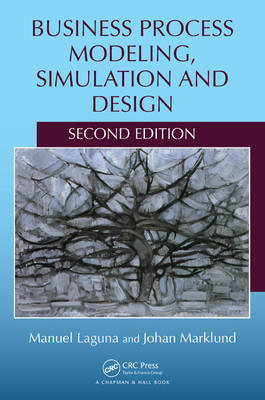
Business Process Modeling, Simulation and Design
Chapman & Hall/CRC (Verlag)
9781439885253 (ISBN)
- Titel erscheint in neuer Auflage
- Artikel merken
New to the Second Edition
Three completely revised chapters that incorporate ExtendSim 8
An introduction to simulation
A chapter on business process analytics
Developed from the authors’ many years of teaching process design and simulation courses, the text provides students with a thorough understanding of numerous analytical tools that can be used to model, analyze, design, manage, and improve business processes. It covers a wide range of approaches, including discrete event simulation, graphical flowcharting tools, deterministic models for cycle time analysis and capacity decisions, analytical queuing methods, and data mining. Unlike other operations management books, this one emphasizes user-friendly simulation software as well as business processes, rather than only manufacturing processes or general operations management problems.
Taking an analytical modeling approach to process design, this book illustrates the power of simulation modeling as a vehicle for analyzing and designing business processes. It teaches how to apply process simulation and discusses the managerial implications of redesigning processes. The ExtendSim software is available online and ancillaries are available for instructors.
Introduction to Business Process Design
What Is a Business Process?
Essence of Business Process Design
Business Process Design, Overall Business Performance, and Strategy
Why Do Inefficient and Ineffective Business Processes Exist?
Process Management and Process-Oriented Improvement Programs
Process Management and the Power of Adopting a Process View
Six Sigma Quality Programs
Business Process Reengineering
Revolutionary versus Evolutionary Change
Framework for Business Process-Design Projects
Step 1: Case for Action and Vision Statements
Step 2: Process Identification and Selection
Step 3: Obtaining Management Commitment
Step 4: Evaluation of Design Enablers
Step 5: Acquiring Process Understanding
Step 6: Creative Process Design
Step 7: Process Modeling and Simulation
Step 8: Implementation of the New Process Design
Basic Tools for Process Design
Process Flow Analysis
Workflow Design Principles and Tools
Additional Diagramming Tools
From Theory to Practice: Designing an Order-Picking Process
Managing Process Flows
Business Processes and Flows
Cycle Time and Capacity Analysis
Managing Cycle Time and Capacity
Theory of Constraints
Introduction to Queuing Modeling
The Basic Queuing Process, Queuing Systems, and Queuing Strategies
Analytical Queuing Models
Introduction to Simulation
Simulation Models
Discrete-Event Simulation
Getting Started in Simulation Modeling
Illustrative Example
Spreadsheet Simulation of a Process
Successful Simulation in Practice
When Not to Simulate
Modeling and Simulating Business Processes with ExtendSim
Developing a Simulation Model: Principles and Concepts
ExtendSim Elements
ExtendSim Tutorial: A Basic Queuing Model
Basic Data Collection and Statistical Analysis
Adding Randomness to Processing Times and the Use of Attributes
Adding a Second Underwriting Team
Modeling Resources and Resource Pools
Customizing the Animation
Calculating Activity-Based Costs
Cycle Time Analysis
Modeling Advanced Queuing Features
Modeling Routing in Multiple Paths and Parallel Paths
Model Documentation and Enhancements
Input and Output Data Analysis
Dealing with Randomness
Characterizing Probability Distributions of Field Data
Random Number Generators
Generation of Random Variates
Analysis of Simulation Output Data
Modeling and Analysis of Process-Design Cases
Optimizing Business Process Performance
Business Process Optimization
Role of SimulationOptimization in Business Process Management
SimulationOptimization with ExtendSim
Optimization of Process Simulation Models
Business Process Analytics
Competing on Analytics
Business Process Management Systems
Process Benchmarking
Final Thoughts
Appendix: Instructions for Downloading ExtendSim Demo or LT
Index
A Summary, Exercises, and References appear at the end of each chapter.
| Zusatzinfo | 283 equations; 140 Tables, black and white; 230 Illustrations, black and white |
|---|---|
| Sprache | englisch |
| Maße | 178 x 254 mm |
| Gewicht | 1111 g |
| Themenwelt | Technik ► Maschinenbau |
| Wirtschaft ► Betriebswirtschaft / Management ► Unternehmensführung / Management | |
| ISBN-13 | 9781439885253 / 9781439885253 |
| Zustand | Neuware |
| Informationen gemäß Produktsicherheitsverordnung (GPSR) | |
| Haben Sie eine Frage zum Produkt? |
aus dem Bereich



